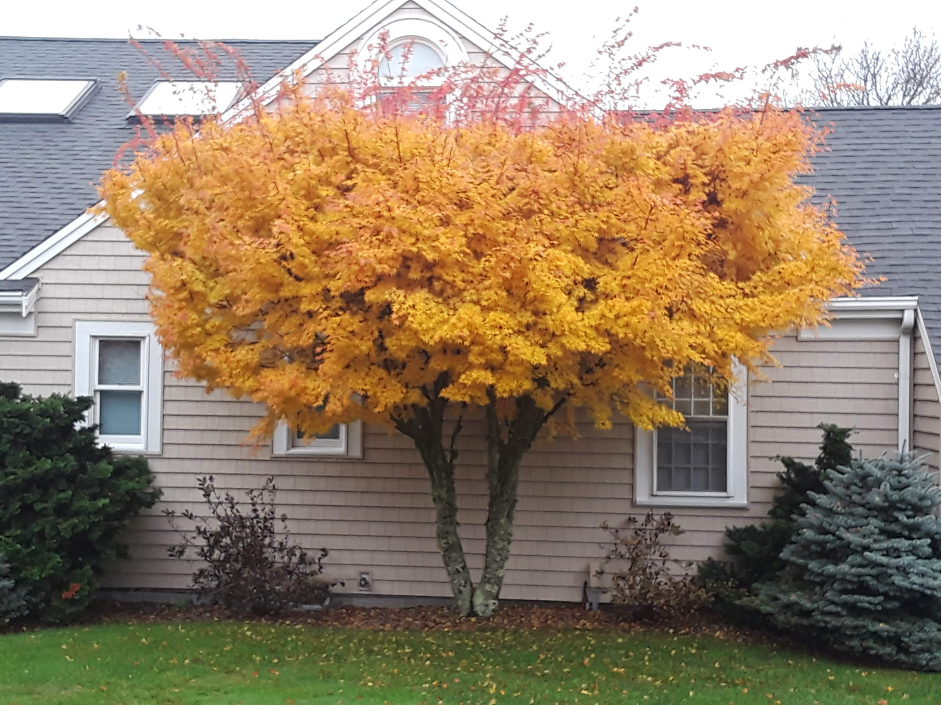When it comes to maintaining a healthy, beautiful garden or landscape, the terms “pruning” and “trimming” are often used interchangeably. While they both involve cutting parts of plants, they are distinct practices with different goals, techniques, and outcomes. Understanding the differences between pruning and trimming is essential for every gardener or landscaper who wants to maintain plants’ health, shape, and appearance.
Plants have a natural shape, but within the landscape different forms are used. Understanding the natural shape whether mound, cane (forsythia and nandina) or tree like. Cane plants spread by new shoots from the base.
What is Pruning?
Pruning is a more specialized and deliberate process, often done for the overall health of the plant. It involves cutting away dead, diseased, or damaged branches and stems, as well as removing parts of the plant that may be growing in the wrong direction. Pruning is typically done on trees, shrubs, and certain perennials and is usually carried out during the plant’s dormant season—either in late fall or early spring—though some plants may need pruning during their active growing season.
Calendars to know when to prune can be found at www.ext.vt.edu and other pruning publications.
Objectives of Pruning:
- Health of the Plant: Pruning helps remove diseased or damaged branches, preventing the spread of illness and allowing the plant to focus its energy on healthy growth.
- Improved Airflow and Sunlight Exposure: By removing excess growth, pruning allows better airflow and sunlight penetration into interior of plant, which are essential for the plant’s overall well-being.
- Shape and Structure: Pruning helps maintain or improve the shape and structure of the plant, encouraging stronger growth patterns and a more aesthetically pleasing form.
- Encouraging New Growth: Some plants, like roses or fruit trees, benefit from pruning because it encourages the development of new shoots or fruit-bearing branches.
Common Tools for Pruning:
- Pruning shears
- Loppers
- Pruning saws
- Hedge shears (for larger shrubs or trees). Yes, even on trees!
What is Trimming?
Trimming is a more general term that refers to the routine cutting or clipping of a plant’s foliage, typically to maintain its size or appearance. Trimming is less invasive than pruning and focuses on the outer growth of the plant. It’s often done on hedges, bushes, and ornamental plants to ensure they remain neat and tidy.
Objectives of Trimming:
- Aesthetic Appeal: Trimming is largely done for cosmetic reasons to maintain a neat and tidy appearance. It shapes and neaten edges without significantly impacting the plant’s overall health.
- Control Size and Shape: Trimming is ideal for keeping bushes, hedges, and topiary plants in a particular shape or size, preventing them from becoming overgrown and unruly.
- Routine Maintenance: Trimming is typically a more frequent task than pruning and can be done multiple times a year, depending on the plant’s growth rate.
- Deadheading: Deadheading removes spent flowers and allows new growth and new flowers to flourish.
Common Tools for Trimming:
- Hedge shears (manual or electric)
- String trimmers (for lawn edges)
- Pruning scissors (for smaller trimming tasks)
- Pruners
Key Differences Between Pruning and Trimming
| Feature | Pruning | Trimming |
| Purpose | To promote health, structure, and shape of the plant. | To maintain a neat, tidy appearance and size. |
| Scope | More extensive and involves cutting back major parts of the plant. | Light cutting focused on the outer edges and small branches. |
| Frequency | Done less frequently, usually once a year or as needed. | Done more frequently, several times a year. |
| When to Do It | Typically done during dormant seasons (fall or early spring). | Can be done throughout the growing season. |
| Tools Used | Pruning shears, loppers, pruning saws, hedge shears. | Hedge shears, trimmers, pruners or pruning scissors. |
| Effect on Growth | Promotes new growth and ensures plant health. | Maintains the appearance and size but does not significantly affect growth. |

- Prune your plants if they are diseased, damaged, or overgrown, or if you want to encourage new growth or improve the structure of a tree or shrub. Pruning is especially important for flowering or fruiting plants, as it helps boost their productivity.
- Trim your plants to maintain their appearance, control size, and keep them looking neat. Trimming is ideal for hedges, bushes, and ornamental plants that don’t need intensive care but require occasional maintenance to avoid becoming unruly.

Conclusion: Pruning and Trimming Go Hand-in-Hand
Both pruning and trimming are essential tools in plant care, but each serves a distinct purpose. Pruning is the more focused, health-driven process that encourages strong growth, while trimming is the routine maintenance practice to keep plants looking their best. By understanding the key differences between the two and knowing when to apply each technique, you can create a healthier and more visually appealing garden or landscape. Whether you’re looking to nurture your plants to their full potential or simply maintain their shape, mastering both practices will help you cultivate the garden of your dreams.


